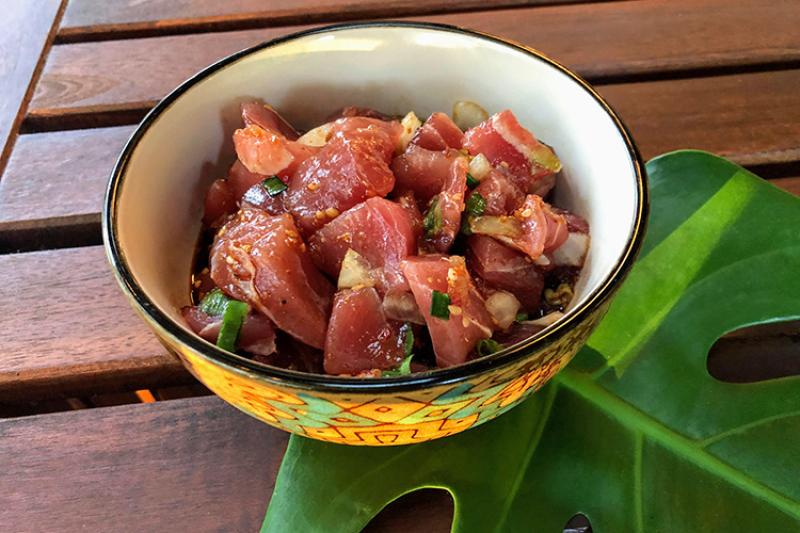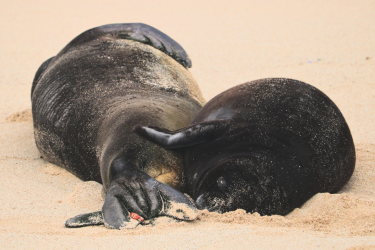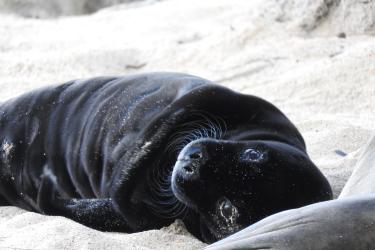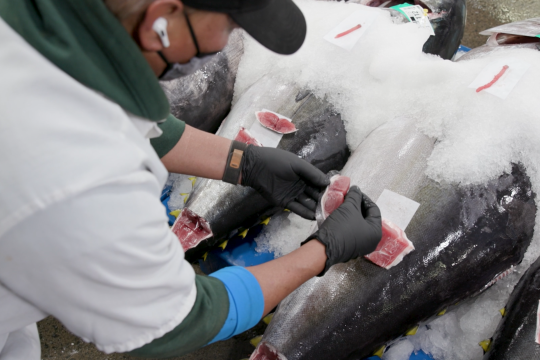Managing bigeye tuna in the Pacific is already challenging, and now a new study shows that climate change may affect our supply of this fish, used to make the deliciously popular ʻahi poke. The study projects the decline of catch in the Hawai‘i bigeye tuna fishery as climate change continues to unfold. However, alternate scenarios could bolster ecosystem resilience and limit fishery declines.
Scientists from the Pacific Islands Fisheries Science Center, the University of Hawai‘i, and the University of Tasmania teamed up to model the ecosystem in which the Hawai‘i bigeye tuna fishery operates. Their model projected how increasing ocean temperatures and declining plankton would affect specific fish species. (Temperature and plankton values were from a suite of climate models used by the Intergovernmental Panel on Climate Change.) The model also predicted how different scenarios, such as decreased fishing effort, could change those effects.
The scientists found that climate change led to a decline in catch regardless of whether fishing effort increased, decreased, or remained the same. A decline in bigeye tuna catch means less ‘ahi poke at your local market. However, the study also revealed fishing scenarios that may allow the ecosystem to remain resilient in the face of climate change.
“Rather than seeing the results as a doom-and-gloom future for the Hawai‘i fishery, I see them as encouraging. They show that local choices matter, that we can decide which future scenario we want to pursue,” says lead author Phoebe Woodworth-Jefcoats. She points to two future scenarios in particular: In one, the fishery persisted with today’s fishing effort. In another, the fishery slowly reduced its effort to half. Both scenarios showed similar declines in bigeye tuna catch, but in the second scenario, the ecosystem was resilient despite the effects of climate change, and the biomass of each fish species increased.

These results suggest that strategic fishing decisions could allow the industry to counteract some negative effects of climate change. The model used in this study gives the fishing industry greater power to inform its future path. The scientists hope that these results will help the fishery prepare for the effects of climate change.
This model can easily be tailored to other ecosystems and fisheries, which means it can be used by scientists and fishery managers in other regions. As the climate continues to change and demand for seafood increases, Hawai‘i poke bowls won’t be the only dish facing an uncertain future.








